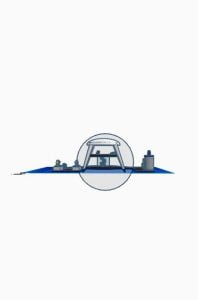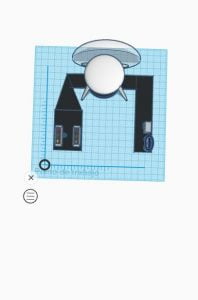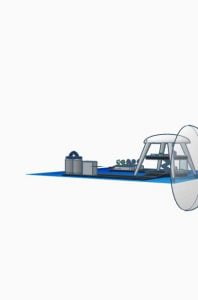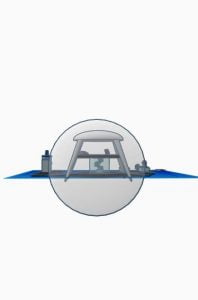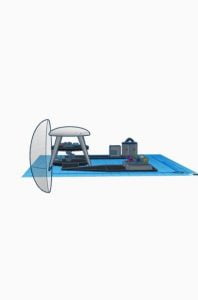|
Project description
The project we have carried out is called GRN.
Our model represents a construction on our satellite that would allow astronauts to rest, work and study there.
Our GRN project would consist of a huge glass dome. The Moon at night has a lower temperature than the Earth, and this dome would attract heat, as it is made of glass. But even so, there would be a mechanism that would cause temperatures to rise at night from -180°C to about 25°C and, by day, would cause the temperature to drop from 100°C to about 25°C.
For us, it is essential that our project does not harm the environment, so GRN will have mechanisms that will transform non-renewable energies into renewables.
It should be noted that, we do not want to civilize the Moon, we want to make a breakthrough in the next chapter of the history of the future without erasing the prologue from the book.
From outside GRN, there would be another small dome connected by a tube to the main dome, where there would be an oxygen manufacturing machine so that astronauts inside GRN would not have to wear a helmet.
Also, GRN will have a greenhouse, as the lunar surface has mineral salts and water in the craters and at the lunar poles, so you could plant certain types of plants.
If the Earth is known as the blue planet, could we know the Moon as the green satellite?
|
|
Where do you want to build your Moon Camp?
Close to the Lunar Equator
Why did you choose this location?
We have chosen her for three reasons:
1- Because being at the midpoint of the Moon, we would have controlled the entire satellite.
2- There are craters all over the satellite, that is, we would have the comfort of having craters inside our main dome, from which we could extract water.
3- When we built it on the equator of the Moon, we would have more land to expand our module.
In short, although most people think that the poles are the ideal area to build the module, we have wanted to get out of the margin and we have found positive points to locate our project at the equator of the satellite.
How do you plan to build your Moon Camp? Which materials would you use?
We would build Moon Camp with machines not too big to carry inside the ship and the process would be slow and thorough, so as not to damage the Moon.
GRN would be made of different types of materials, but mainly of metals, 18-carat white gold for the conduction of electricity, glass to raise and lower temperatures, hard plastic for our crops.
Explain how your Moon Camp will provide the astronauts with:
|
|
You could get it through the suction pad (installed on the floor of our little lunar town) because, in the craters at the equator of the Moon, where our project, GRN, is installed. Water can be extracted from them, according to numerous studies that show that there is liquid in them.
|
The ship would carry a shipment of dehydrated food, just like the military does.
But, as we have indicated before, the greenhouse room, thanks to the cross-breeding of species, would produce more food (as much as astronauts calculate they need).
These crosses would provide all the essential nutrients and grow in a short period of time.
|
Our intention at all times has been to create a 100% green camp/city and that is why GRN would have a mechanism to transform non-renewable energies into renewables.
We took advantage of the high temperature of the moon during the day, which exceeds 100ºC, to obtain solar energy, which would be the energy that our ship would use.
ENERGY IS NEITHER CREATED NOR DESTROYED, ONLY TRANSFORMED!
|
We have dedicated a whole part of our camp to regulate and supply GRN with this important gas, O2.
The mechanism would transform CO2, which astronauts would produce by breathing and plants by the process of photosynthesis, into O2.
|
|
Describe a day on the Moon for one of your Moon Camp astronauts
A normal day for any astronaut at GRN would consist of:
When you wake up in your bed, on the top floor, go down to check the mechanisms of O2 to make sure everything is in order, then go to the green room to take care of the cultivated plants and to work on the new species and, is that, the astronauts would create new plants by modifying the parent and subsidiary generations (as in the past did Mendel with the garden peas), in order that these have medical and food purposes. As we have emphasized many times, our project is very concerned about the environment and about the satellite itself.
Our astronaut will leave GRN to further investigate the satellite and then check that the mechanism regulates the temperature correctly and take advantage of the hours he has left, shortly before bed, to, thanks to the command center, to speak with the superiors of the mission and, of course, with their families.
Because, it is very important to work on the mission but you also have to know how to disconnect and be 100% psychologically.
|



